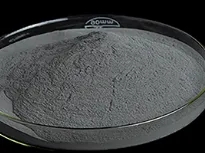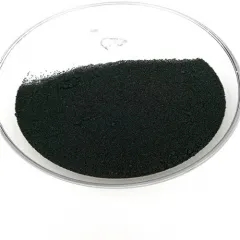If you are looking for high-quality products, please feel free to contact us and send an inquiry, email: brad@ihpa.net
Titanium disilicide (TiSi2), as a metal silicide, plays a vital role in microelectronics, especially in Huge Range Integration (VLSI) circuits, because of its excellent conductivity and low resistivity. It substantially decreases call resistance and improves current transmission performance, adding to broadband and low power intake. As Moore’s Legislation approaches its limitations, the emergence of three-dimensional integration modern technologies and FinFET designs has made the application of titanium disilicide important for maintaining the efficiency of these sophisticated production processes. Additionally, TiSi2 shows terrific possible in optoelectronic gadgets such as solar cells and light-emitting diodes (LEDs), along with in magnetic memory.
Titanium disilicide exists in several phases, with C49 and C54 being one of the most usual. The C49 stage has a hexagonal crystal structure, while the C54 phase shows a tetragonal crystal framework. Because of its lower resistivity (around 3-6 μΩ · centimeters) and higher thermal security, the C54 stage is chosen in commercial applications. Various techniques can be used to prepare titanium disilicide, including Physical Vapor Deposition (PVD) and Chemical Vapor Deposition (CVD). The most common method includes reacting titanium with silicon, transferring titanium movies on silicon substratums by means of sputtering or dissipation, complied with by Quick Thermal Processing (RTP) to develop TiSi2. This technique permits precise density control and consistent distribution.
(Titanium Disilicide Powder)
In terms of applications, titanium disilicide finds substantial use in semiconductor gadgets, optoelectronics, and magnetic memory. In semiconductor gadgets, it is employed for source drain get in touches with and entrance contacts; in optoelectronics, TiSi2 toughness the conversion performance of perovskite solar batteries and enhances their stability while reducing issue density in ultraviolet LEDs to boost luminescent effectiveness. In magnetic memory, Rotate Transfer Torque Magnetic Random Accessibility Memory (STT-MRAM) based on titanium disilicide features non-volatility, high-speed read/write abilities, and reduced energy usage, making it an ideal candidate for next-generation high-density information storage space media.
Despite the considerable potential of titanium disilicide throughout different state-of-the-art fields, obstacles stay, such as more reducing resistivity, enhancing thermal stability, and creating effective, economical massive manufacturing techniques.Researchers are exploring new material systems, maximizing user interface engineering, managing microstructure, and creating environmentally friendly procedures. Efforts include:
()
Searching for brand-new generation materials through doping other elements or changing compound make-up ratios.
Looking into ideal matching systems between TiSi2 and other materials.
Making use of innovative characterization methods to discover atomic plan patterns and their influence on macroscopic homes.
Devoting to environment-friendly, environmentally friendly brand-new synthesis routes.
In recap, titanium disilicide attracts attention for its fantastic physical and chemical homes, playing an irreplaceable function in semiconductors, optoelectronics, and magnetic memory. Dealing with expanding technical demands and social obligations, growing the understanding of its fundamental clinical principles and checking out ingenious remedies will certainly be key to advancing this field. In the coming years, with the introduction of even more breakthrough results, titanium disilicide is expected to have an even more comprehensive advancement prospect, continuing to add to technological progression.
TRUNNANO is a supplier of Titanium Disilicide with over 12 years of experience in nano-building energy conservation and nanotechnology development. It accepts payment via Credit Card, T/T, West Union and Paypal. Trunnano will ship the goods to customers overseas through FedEx, DHL, by air, or by sea. If you want to know more about Titanium Disilicide, please feel free to contact us and send an inquiry(sales8@nanotrun.com).
All articles and pictures are from the Internet. If there are any copyright issues, please contact us in time to delete.
Inquiry us

